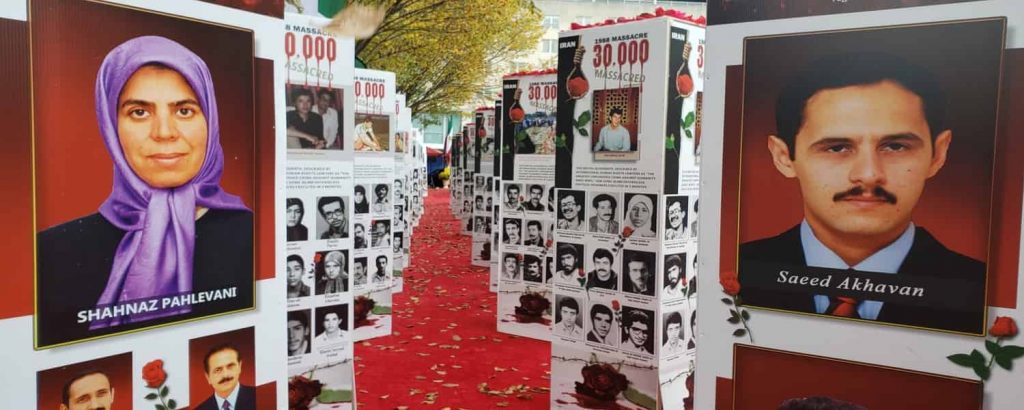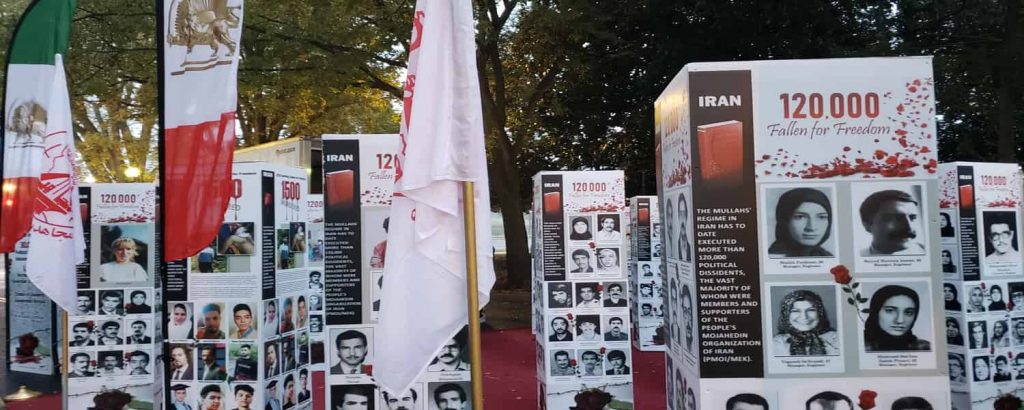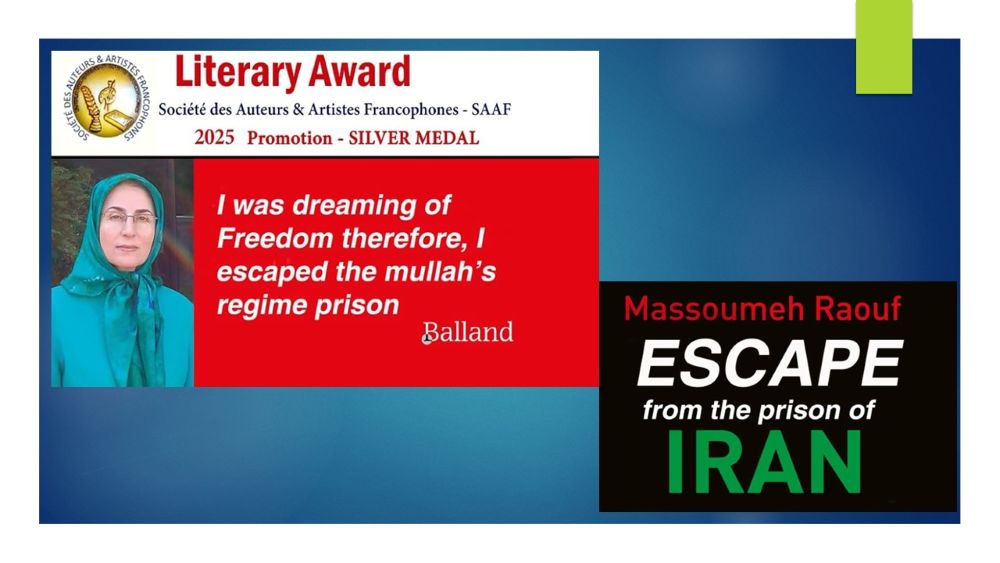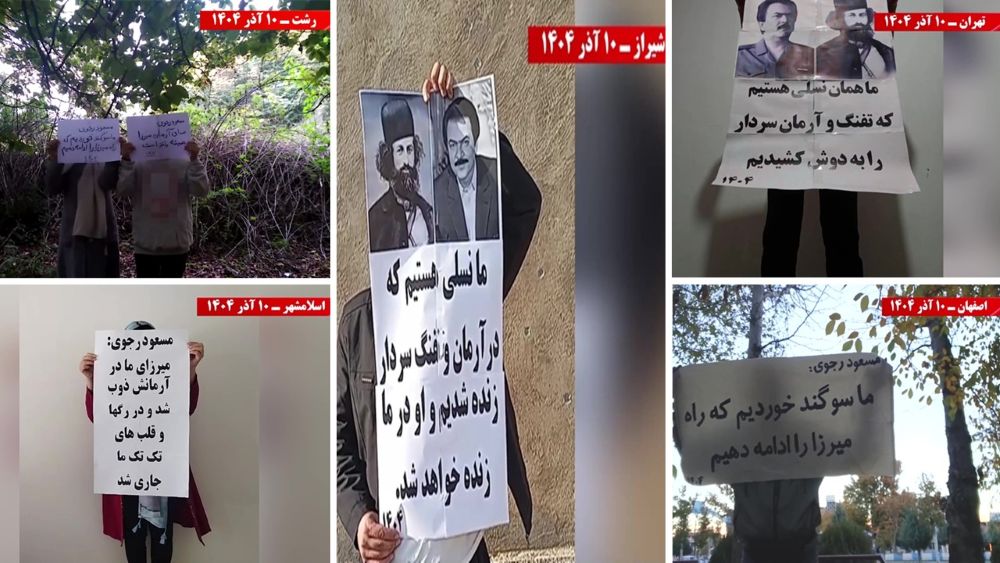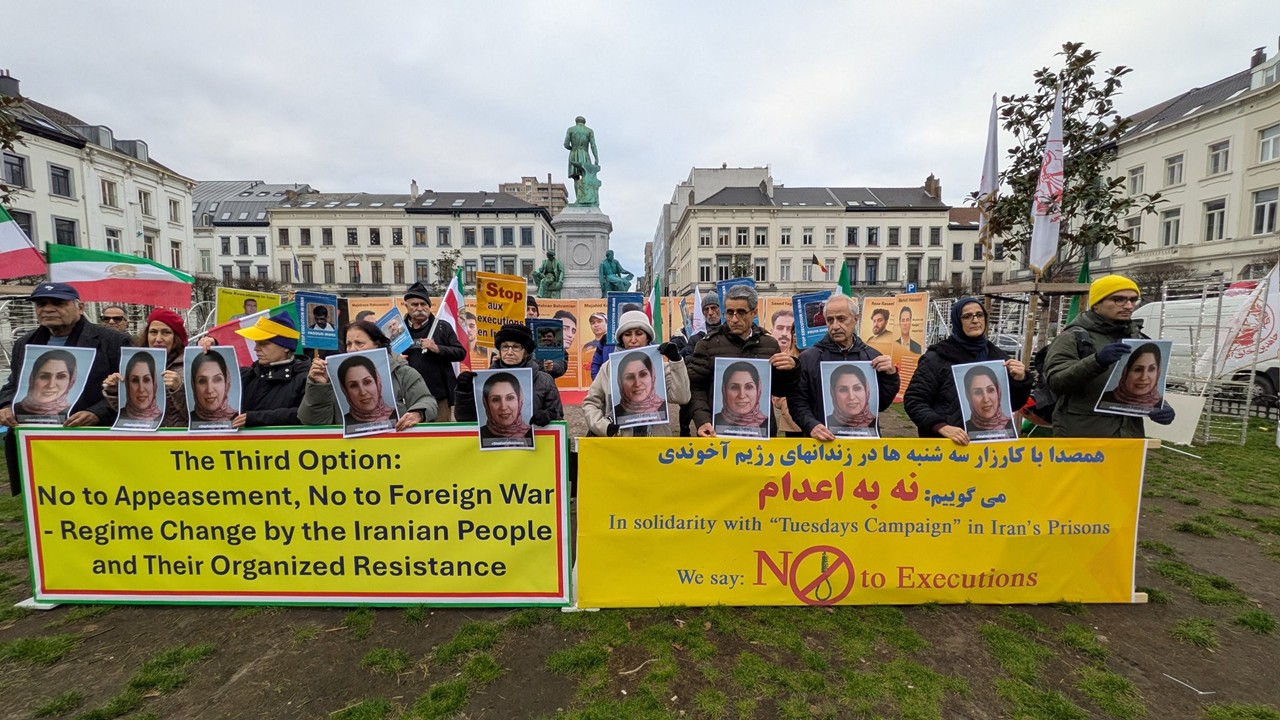In Remembrance of 120,000 Fallen for Freedom, Iranian People Rising
A photo exhibition held about Iran’s regime crime against Iranian people in Washington DC in front of the U.S. State Department.
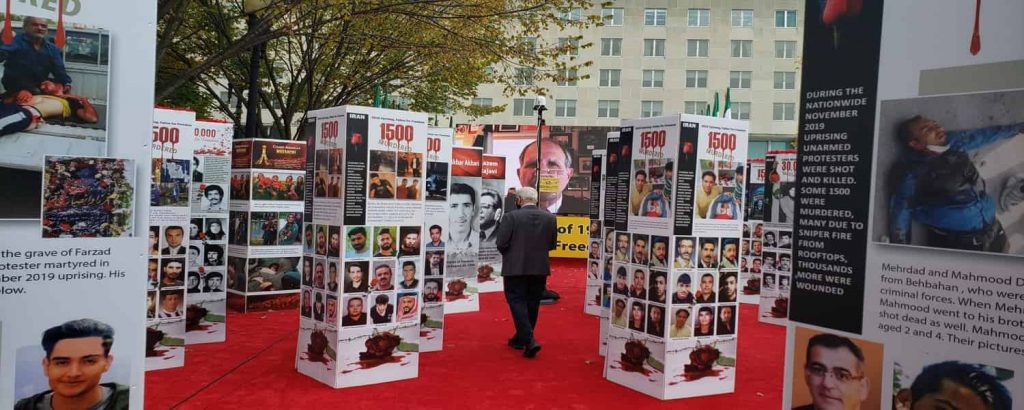
This photo exhibition organized by the Organization of Iranian American Communities(OIAC) on Wednesday, October 21, 2020.
NOW: Organization of Iranian American Communities (OIAC) is holding a photo exhibition & rally in front of the Department of State to urge continued attention on the ongoing persecution of political prisoners, ethnic/religious minorities, and women by the clerical regime in #Iran pic.twitter.com/INgQi5wKcI
— Nasser Sharif (@NasserSharif1) October 21, 2020
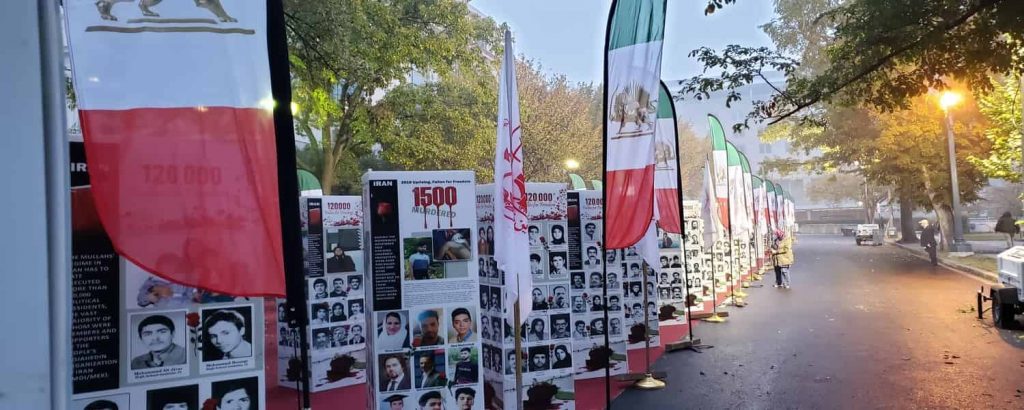
The report of this exhibition is as follows:
Organization of Iranian American Communities (OIAC) held a photo exhibition and rally near the Department of State to urge continued attention to the ongoing persecution of political prisoners, ethnic-religious minorities, and women by the clerical regime in Iran.
Now happening:
— Iranian American Community of Virginia (@iac_virginia) October 21, 2020
Exhibition on #Iran’s crime against Iranian people. Some pictures of those killed by the regime. In front of @StateDept
We invite you to join us@USAdarFarsi @statedeptspox @SecPompeo @USAmbUN @AP @FoxNews @BruceAlanWTOP @GWallaceWTOP pic.twitter.com/s7wxAB3CNG
Prominent political figures from the United States and the Iranian communities spoke at the event. Speakers include:
Judge Michael Mukasey, Former Attorney General of the United States,
Ambassador Mitchell Reese director of policy planning at the U.S. Department of State from 2003 to 2005 during the presidency of George W. Bush,
Ambassador Marc Ginsberg, former U.S. Ambassador to Morocco,
Senator Robert Torricelli,
Linda Chavez White House director of public liaison,
Professor Ivan Sascha Sheehan director of the negotiation and conflict management at the University of Baltimore,
Dr. Firouz Daneshgari, Leading Surgeon at Chase Western University in Cleveland-Ohio,
And representatives of Iranian communities, former political prisoners, and families of martyrs.
Ambassador Ginsberg speaking at the exhibition for human rights in #Iran. @USAdarFarsi @statedeptspox @SecPompeo @cnnbrk @cnni @NBCNews @IranIntl pic.twitter.com/1PpLSgKJWX
— Iranian American Community of Virginia (@iac_virginia) October 21, 2020
In honor of the 120,000 martyrs of Iran’s liberation, especially the 30,000 political prisoners in the 1988 massacre and the 1,500 martyrs of the November 2019 uprising, the speakers stressed the need to hold the leaders of religious fascism in power in Iran accountable for their crimes against humanity.
In front of the @StateDept, today we remember today, the more than 120,000 who were massacred by the regime in Tehran and call on the international community to offer #NoImpunity4Mullahs, @USAdarFarsi @JoeBiden @SecPompeo pic.twitter.com/5IxYrYSa62
— Majid Sadeghpour (@MRSadeghpour) October 21, 2020
The columns of the exhibition decorated with pictures of the martyrs of the path to freedom of Iran and the placards that showed the dimensions of the killing and suppression of the religious tyranny ruling in Iran attracted the participants’ attention visitors.
The event called on U.S. government to frame Iran related policy decisions regarding the regime’s deeds and record.
Witnesses of #1988Massacre speaking about their horrifying experience in #Iran regime prisons and the ruthlessness of the ayatollahs! pic.twitter.com/gH6U26aWT2
— Nasrin Saifi (@NassrinSaifi) October 21, 2020
Background
In four decades of dubious relationship with the West under the pretext of diplomacy, Mullahs have maintained a robust oppression mechanism that uses mass arrests, torture, and dissidents’ execution. The regime has projected normalcy abroad and used terrorism as a foreign policy tool – subverting international diplomacy amidst ongoing medieval torture, massacre, and harrowing brutality against the Iranian people. Such cruelty has included the infamous massacre of over 30,000 political prisoners during the summer of 1988.
The religious dictators in Iran are nevertheless facing sustained anti-establishment protests and a growing international call for accountability for crimes they have committed during their 40 plus years in power. Amnesty International details how detainees were flogged, sexually abused, and given electric shocks in gruesome post-November 2019 protest crackdown in its latest report.
The U.S. Department of State has also called for “the international community to conduct independent investigations and to provide accountability and justice for the victims of these horrendous violations of human rights organized by the Iranian regime.”
